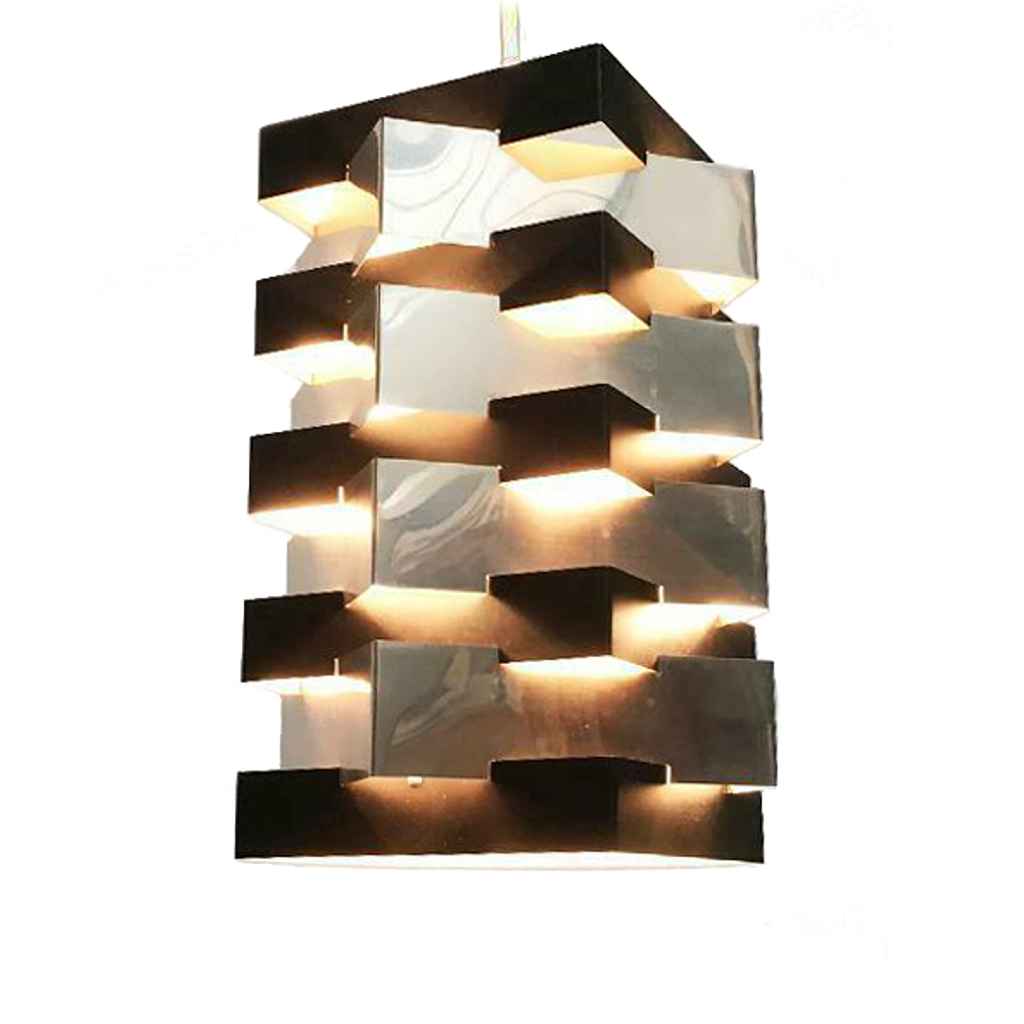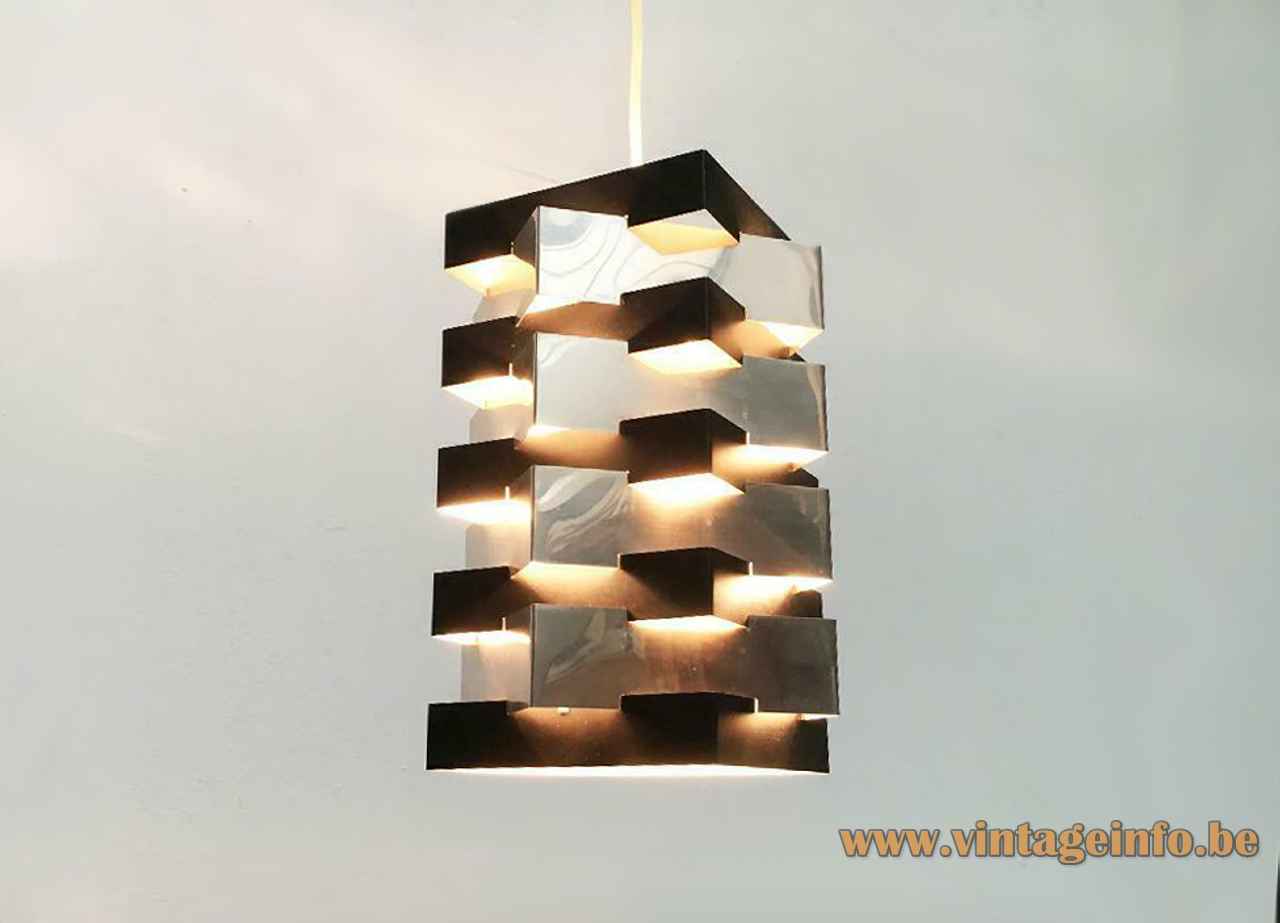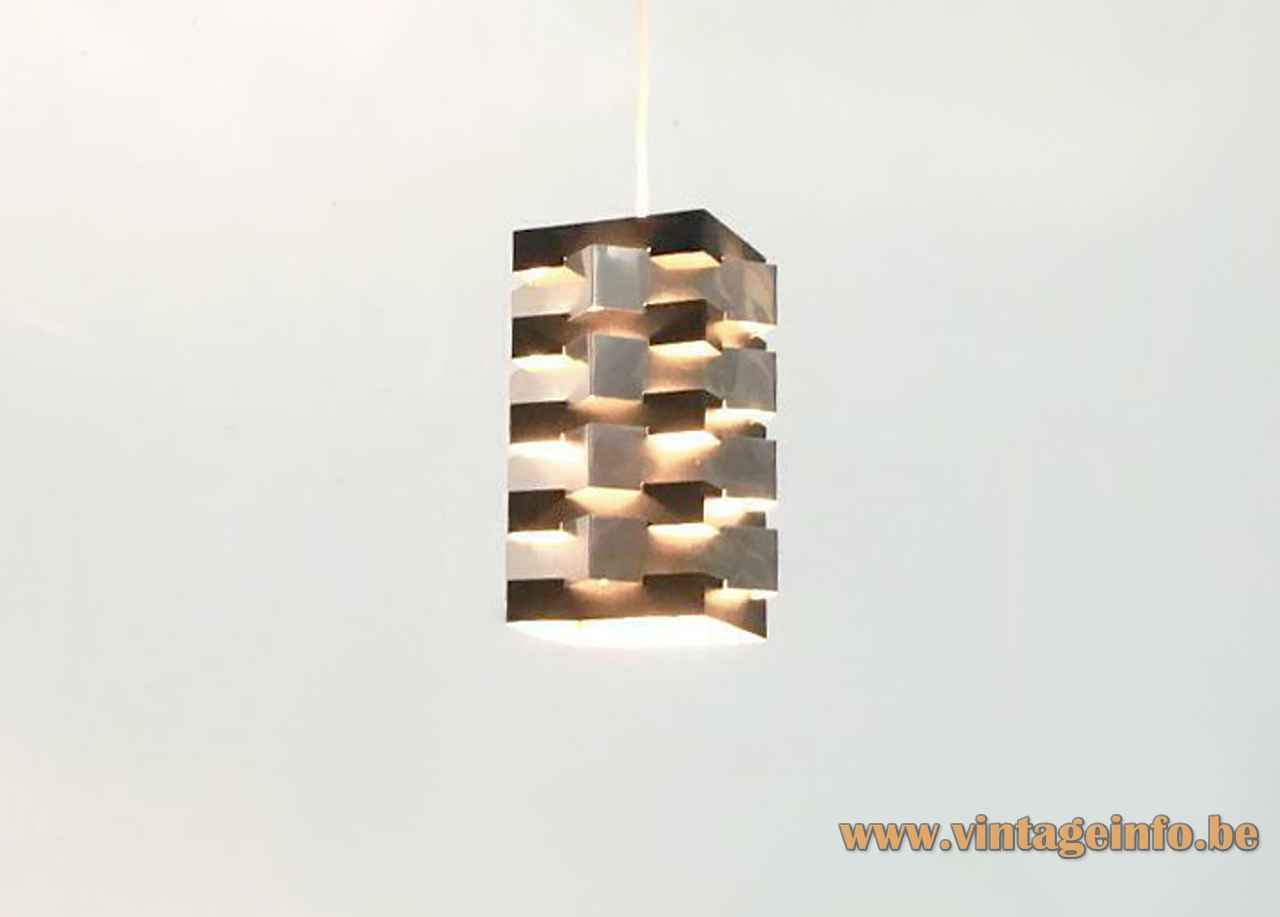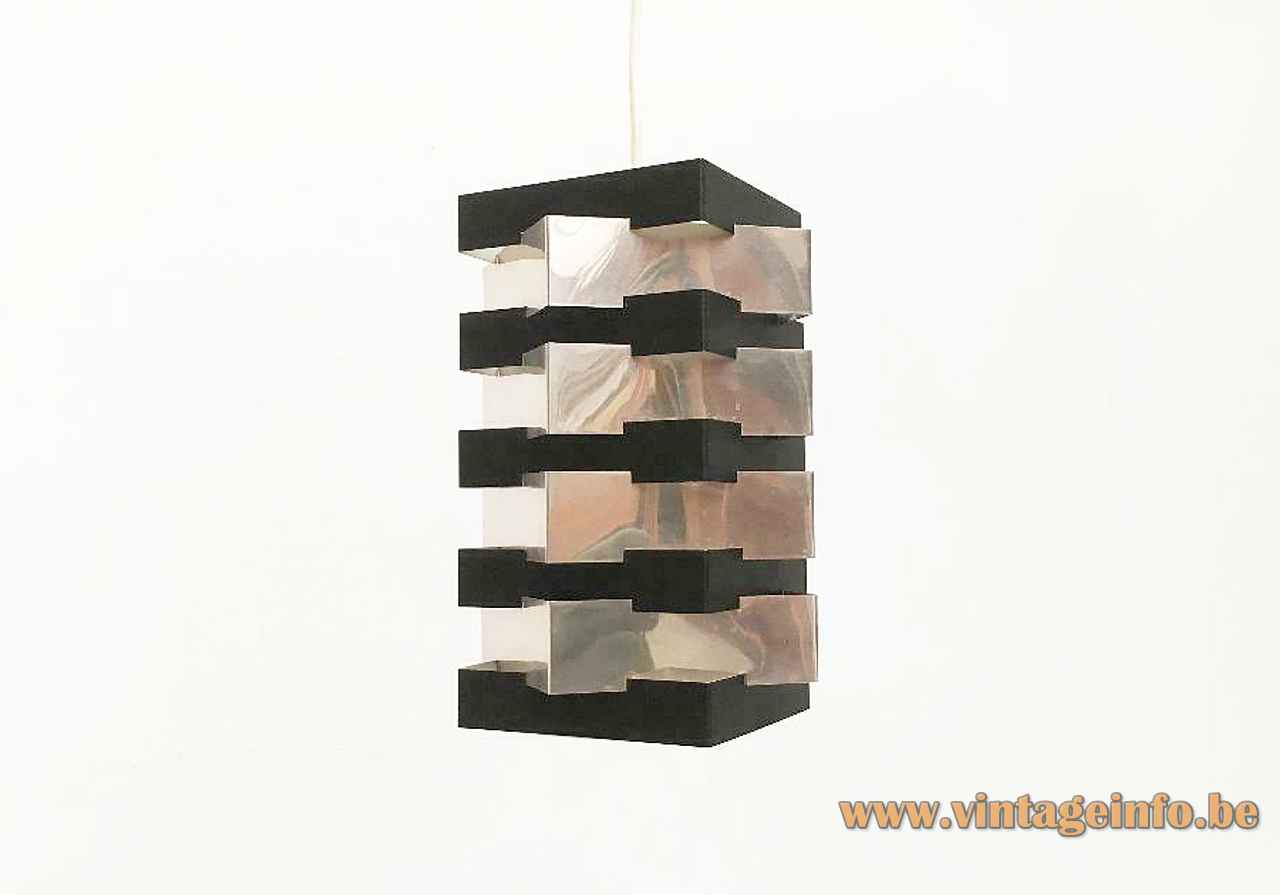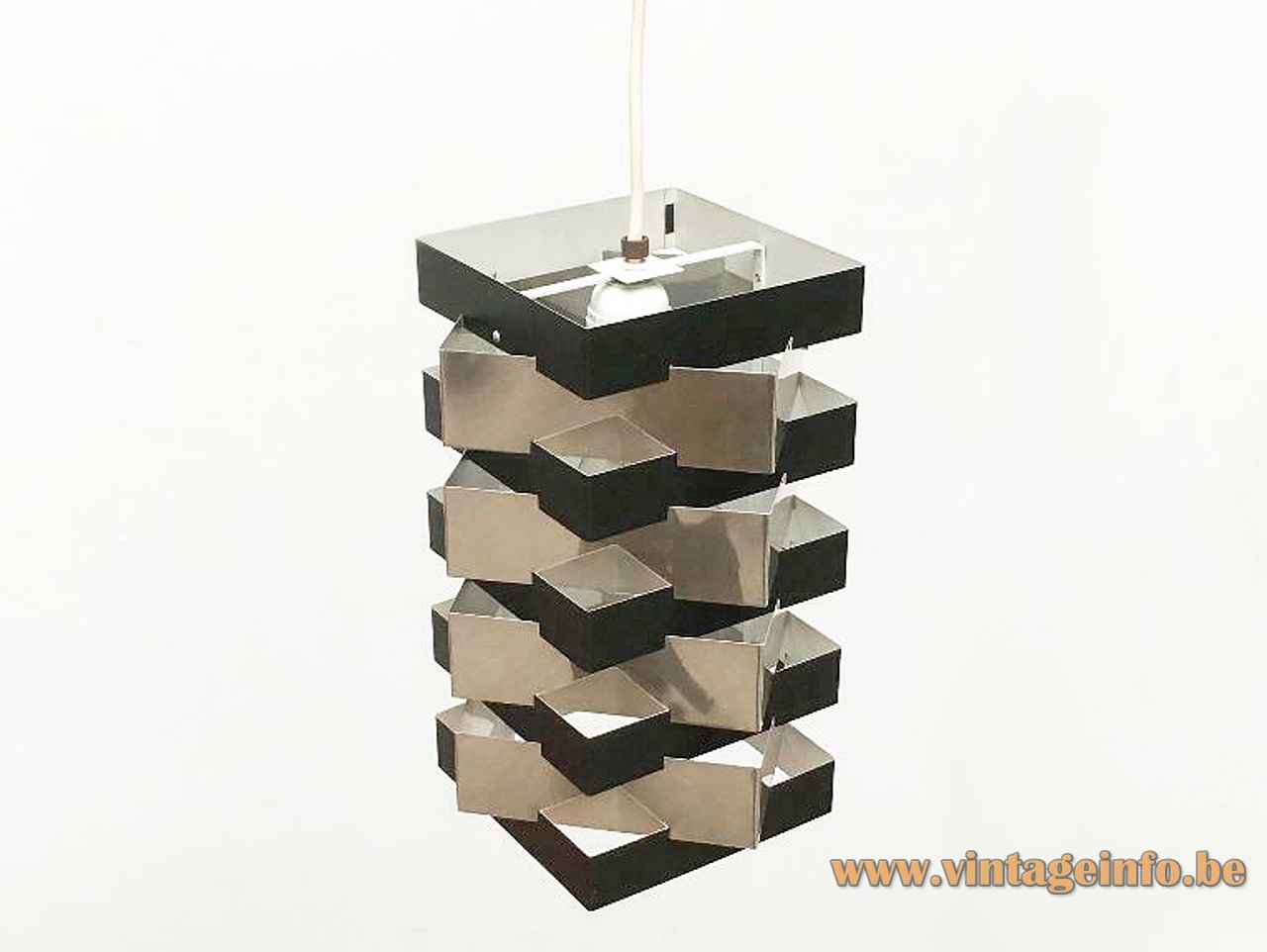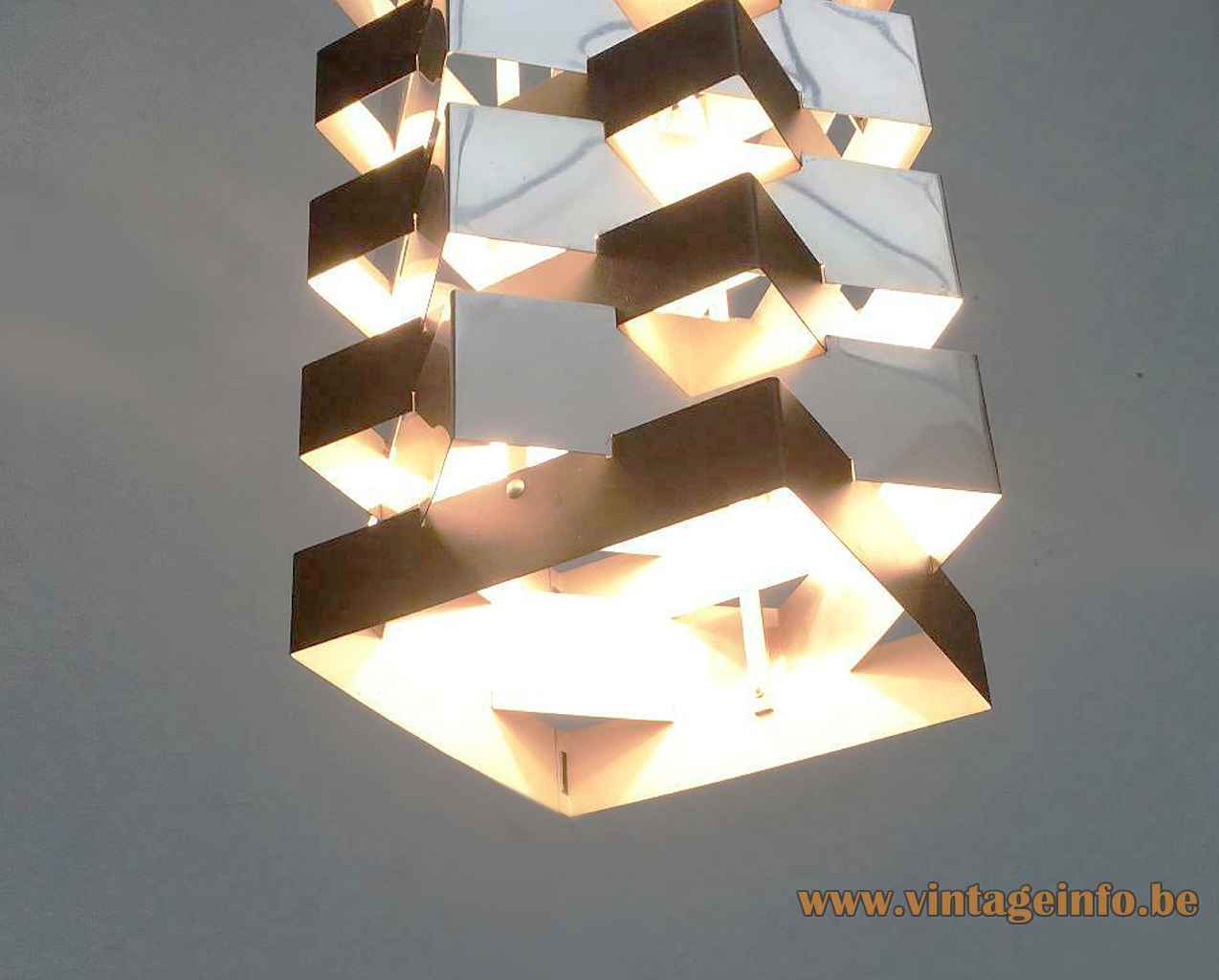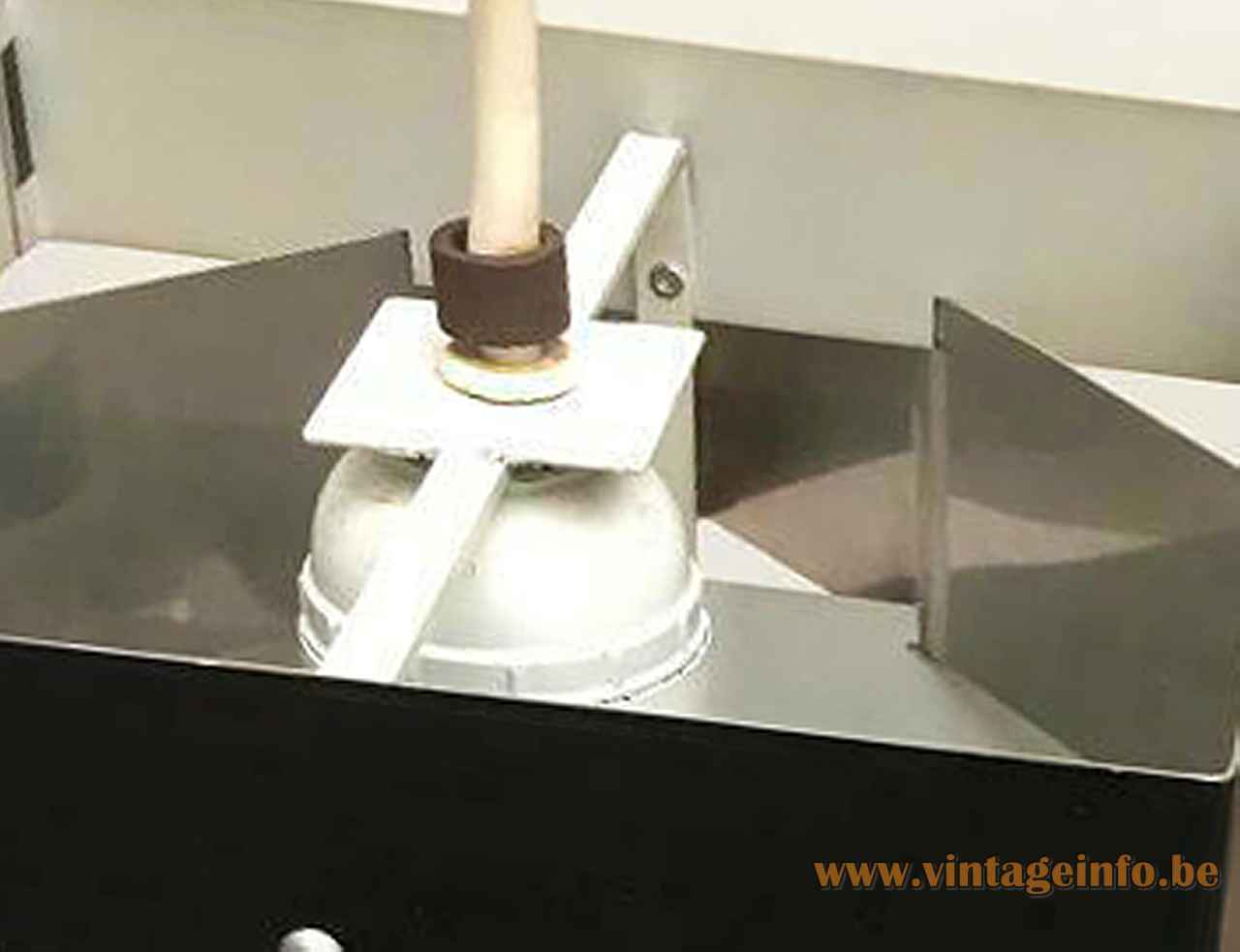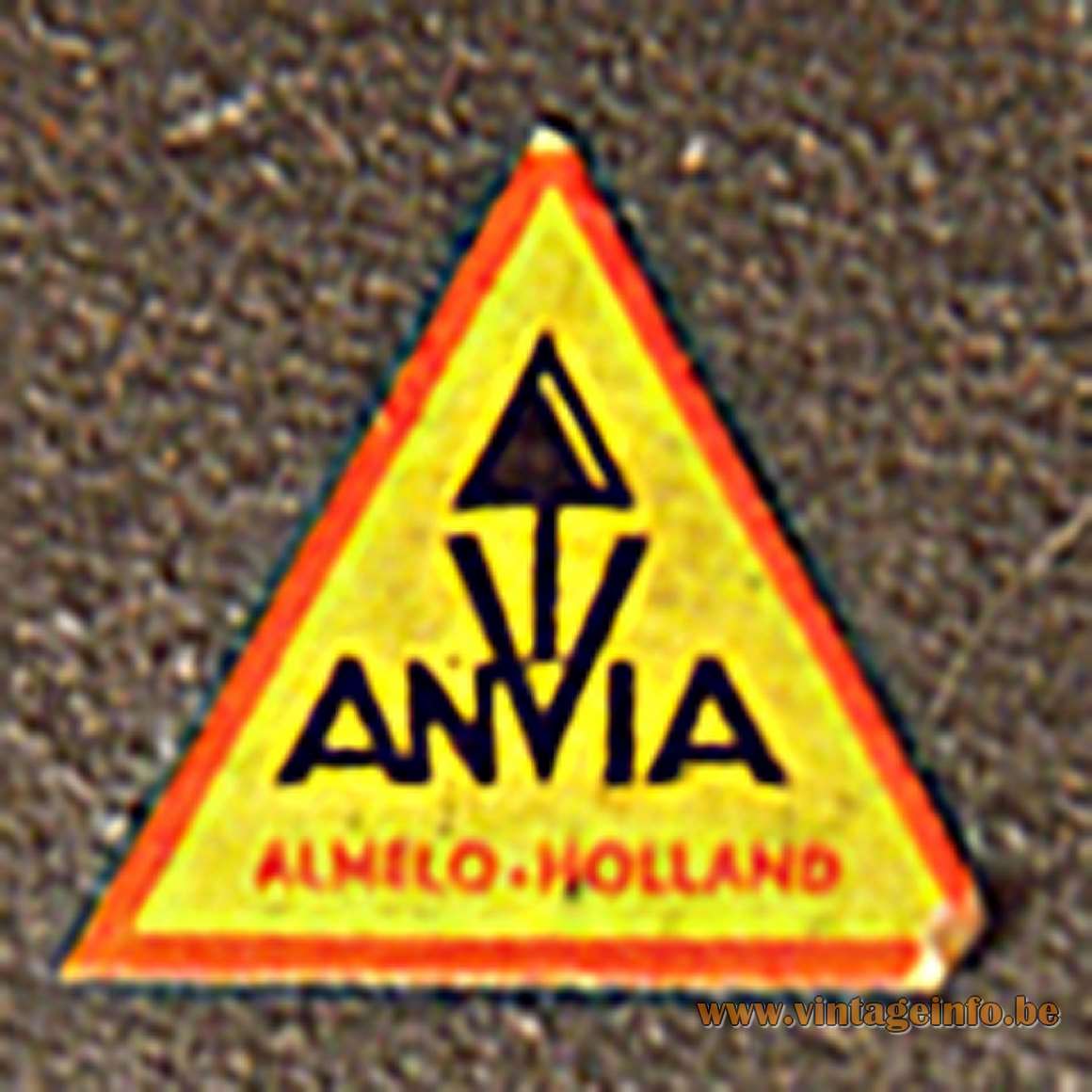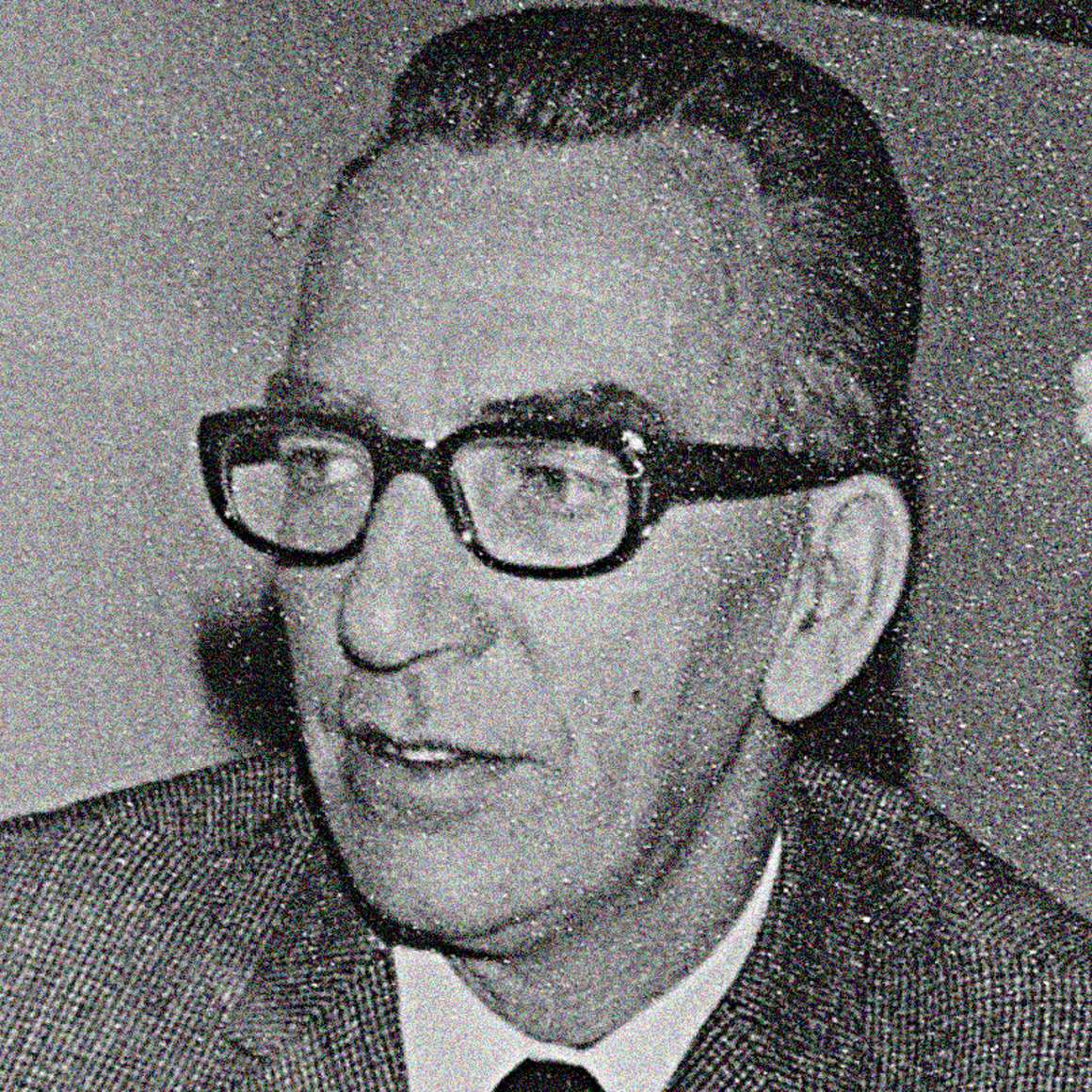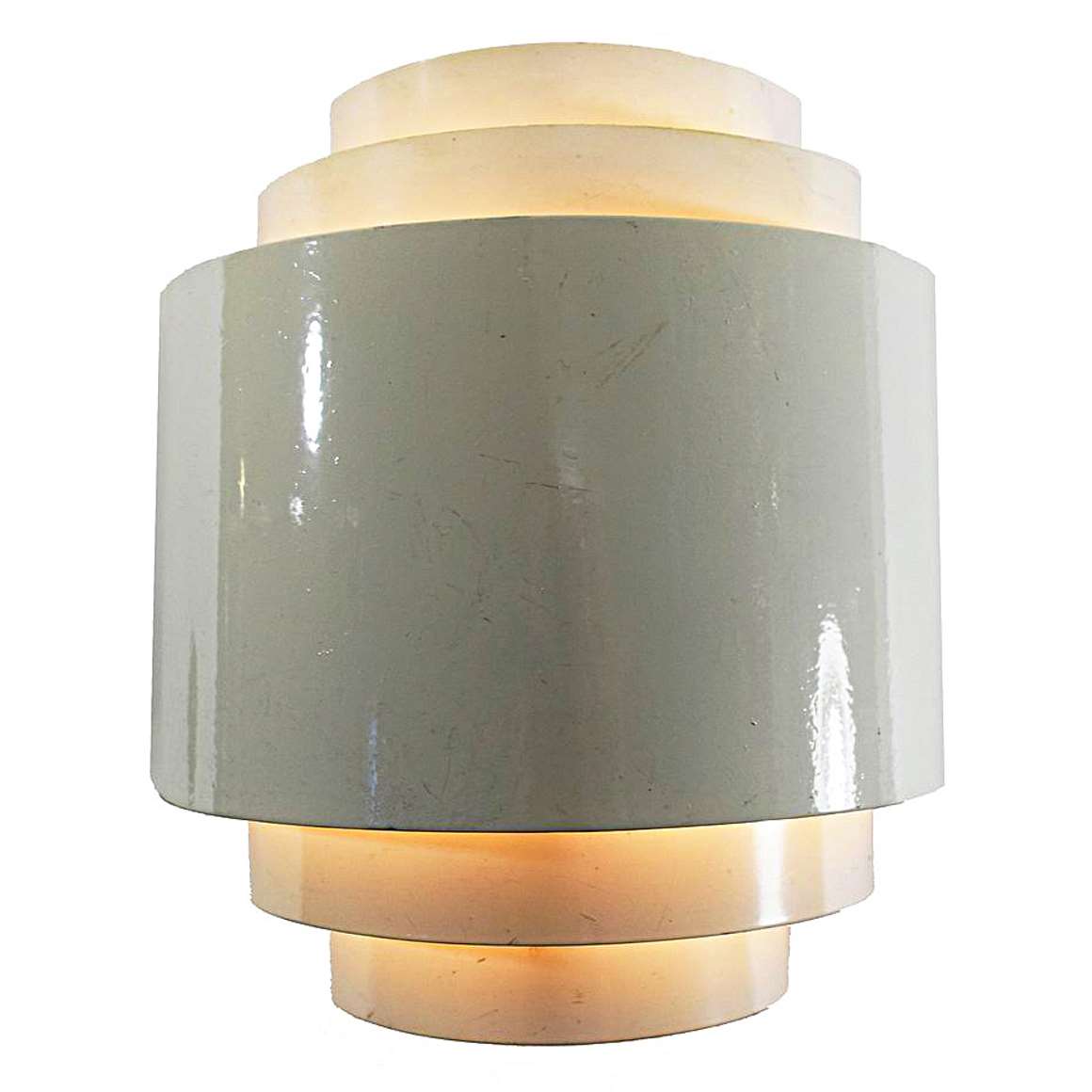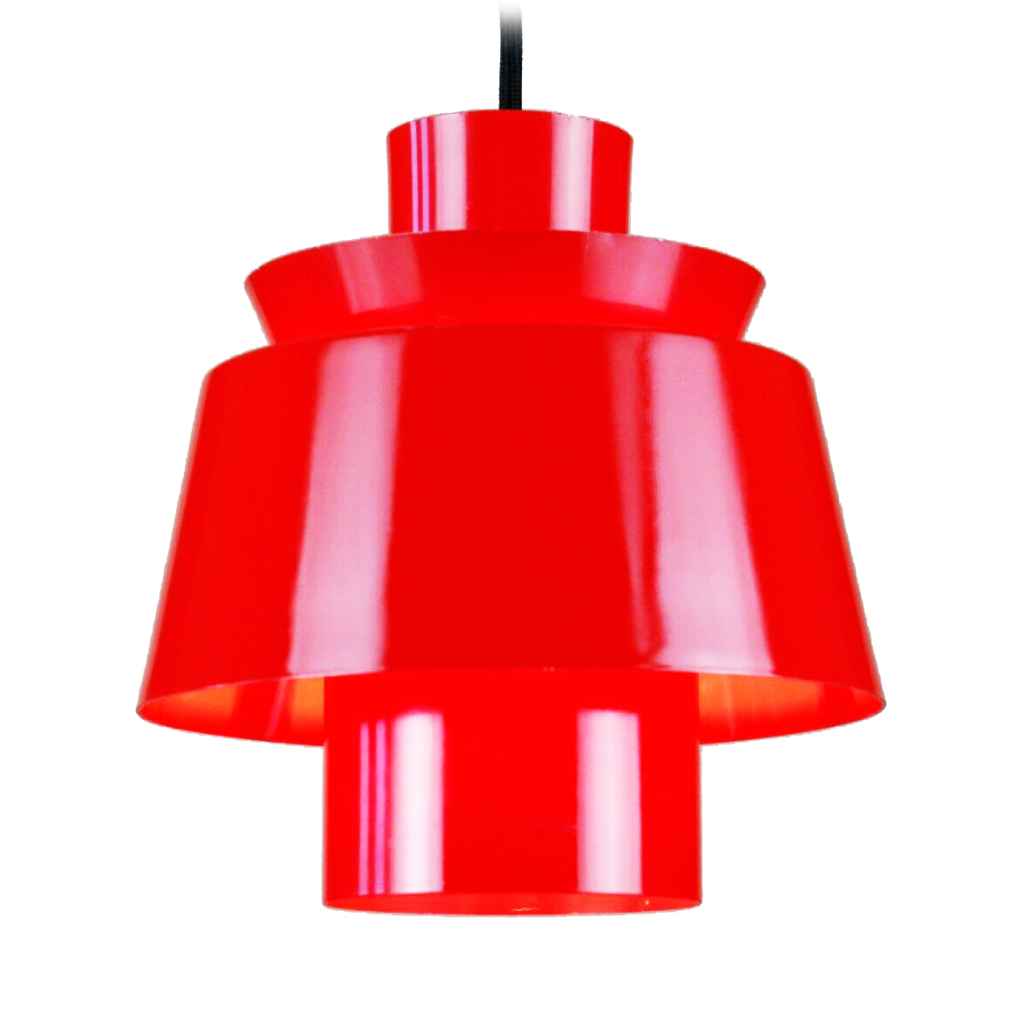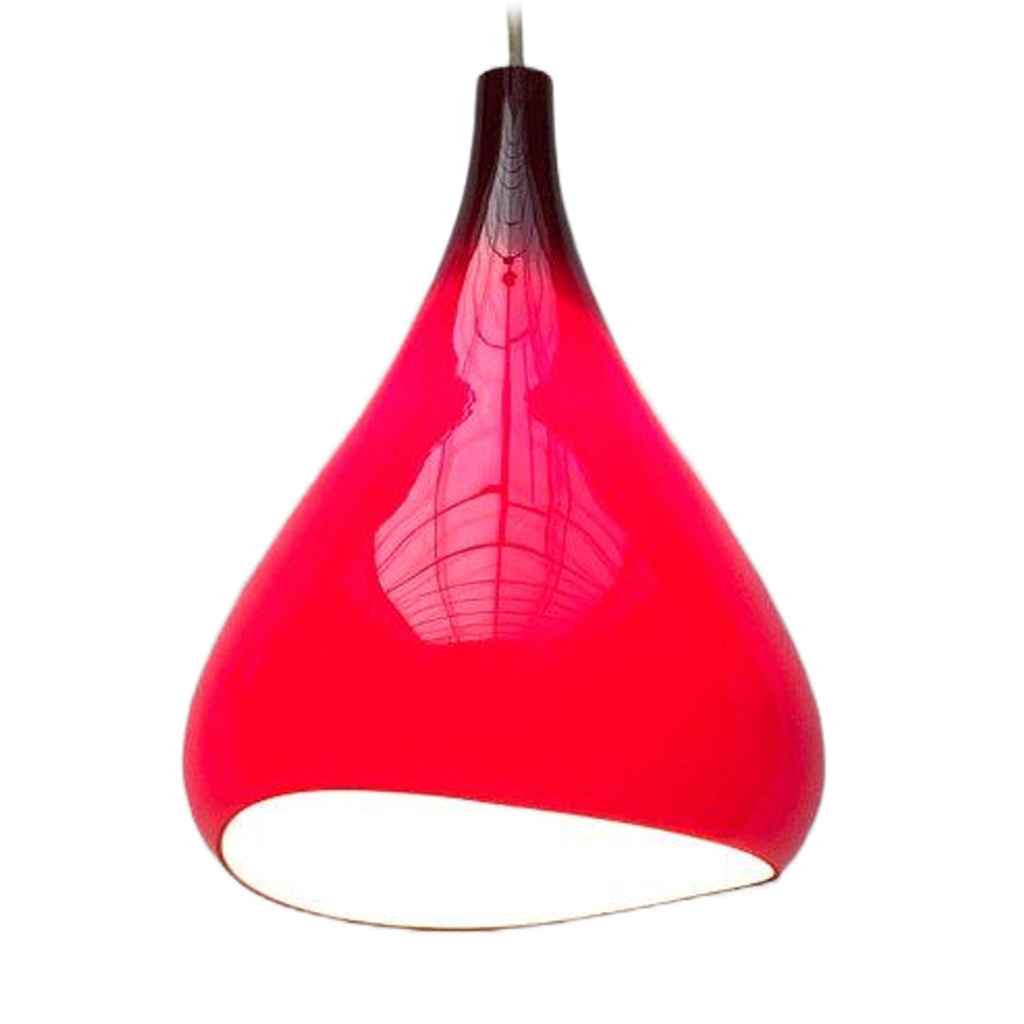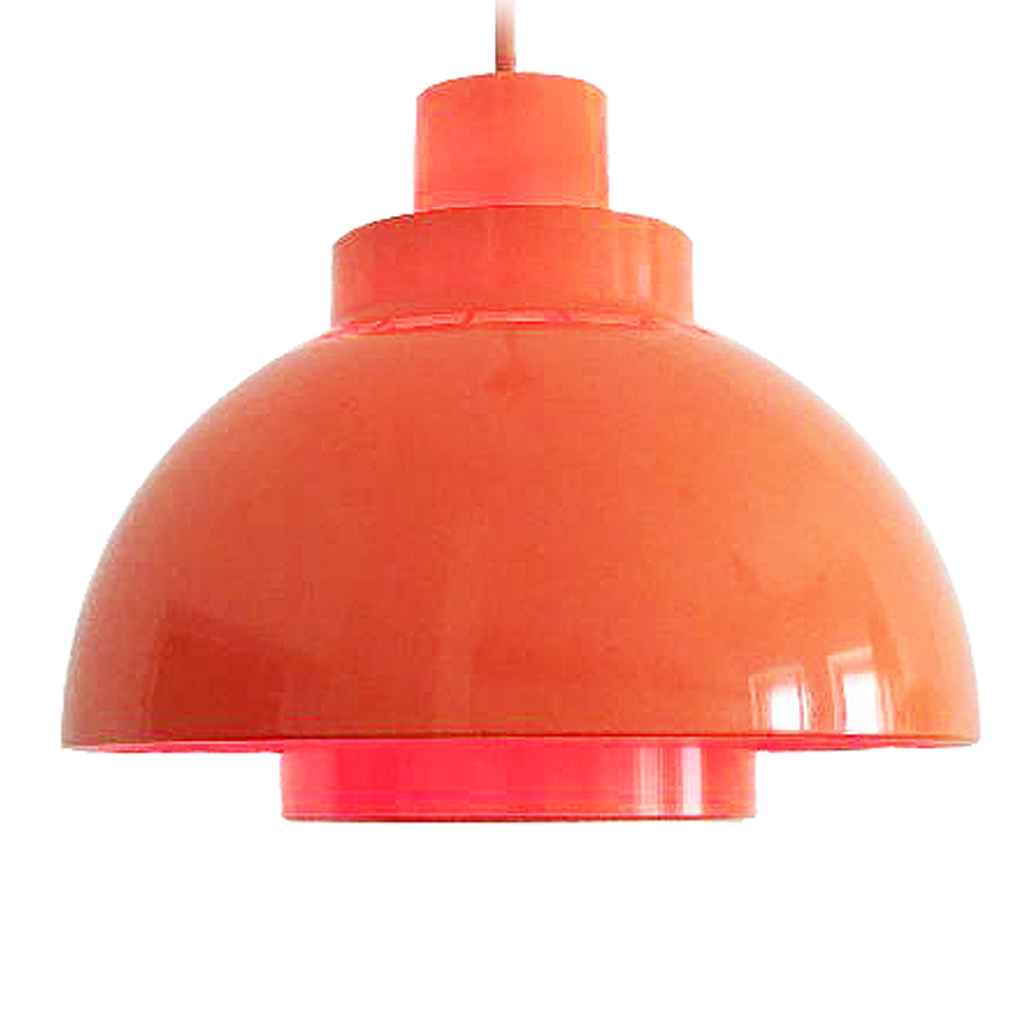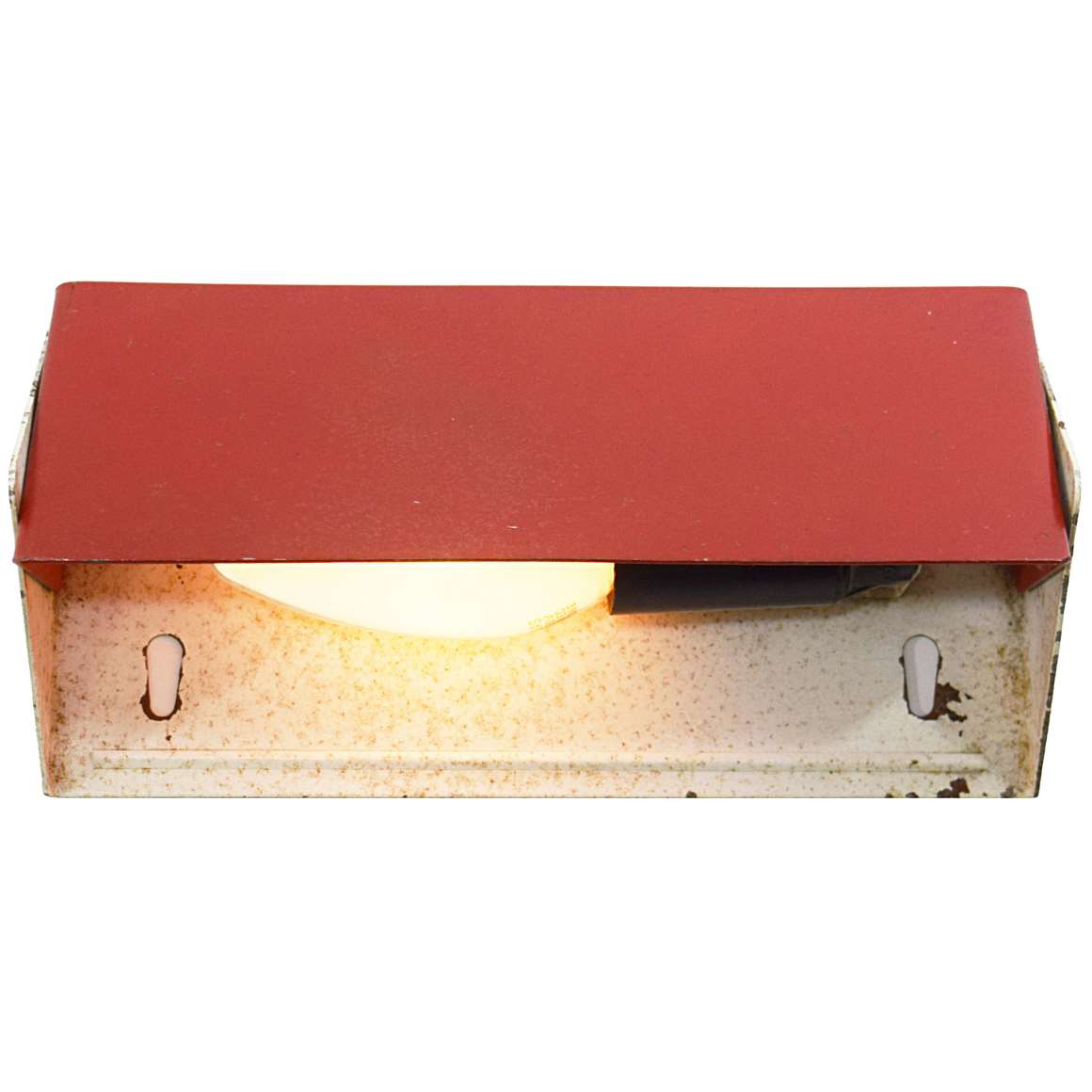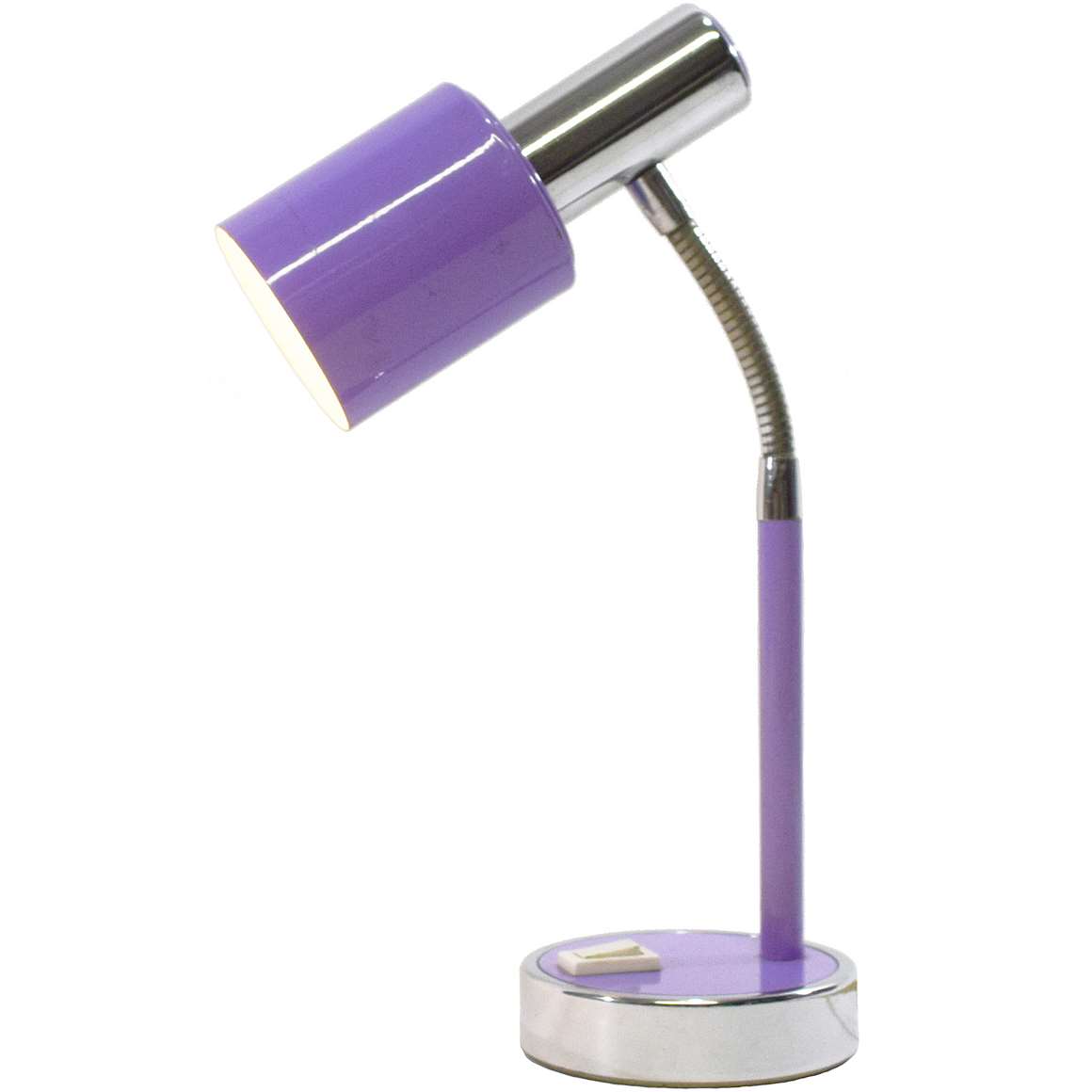Many thanks to Frank from nullviernull raum+kommunikation for the pictures. You can find his shop over here on Pamono.
ANVIA Nordisk Style Pendant Lamp
Materials: Square folded chrome & black stacked slats lampshade. White painted Bakelite E27 socket.
Cord: 80 cm / 31.49”
Height: 28 cm / 11.02”
Width: 20 x 20 cm / 7.87 x 7.87”
Electricity: 1 bulb E27, 1 x 60 watt maximum, 110/220 volt.
Any type of light bulb can be used, not a specific one preferred.
Period: 1960s, 1970s – Mid-Century Modern.
Designer: Niels Esmann & Hans C. Jensen.
Manufacturer:ANVIA: A lgemeene N ederlandsche V erlichtingsi ndustrie A lmelo. (General Dutch Lighting Industry Almelo), The Netherlands.
Other versions: This ANVIA Nordisk style pendant lamp exists in several colours and sizes. It is a copy of the Nordisk Solar pendant lamp designed by Niels Esmann & Hans C. Jensen in 1960. The ANVIA lamp has 7 or 9 layers of slats, the Nordisk Solar pendant lamp has 11 layers, and some other small differences. You can find it over here. Several other copies or lamps in this style were made by other companies.
ANVIA
ANVIA was a brand that made high quality modern lamps. In 1933 the brand was first registered in the Netherlands, but was from origin a German company. The story of ANVIA begins in 1909 when it was founded by the Jewish Max Liebert, who ran the company together with his wife Käte and son Werner in Berlin, Germany. They also had a daughter named Ilse.
By 1930 the company is doing so well, that they have factory’s in 3 different locations. But in 1933Hitler takes charge of Germany, and almost everything gets taken away. Max Liebert gets the change to re-locate one of his factories. So they move the factory to Almelo in The Netherlands and it is doing great. Evidence of the growing number of employments and personnel trips to ‘Schiphol’ confirm this. But in 1940 The Netherlands get taken over. And in March 1942 Max and his wife are being forced to give up their company. In May 1943 Max and his wife get taken to Westerbork. To be deported to Vernichtungslager” Sobibor a couple of months later. Were they were killed after 3 days on the 21th of may 1943. Son Werner also gets killed. Location of death ‘Auschwitz, september 13 in 1943 ‘.
Johannes Joseph Maria (Jan) Hoogervorst
Daughter Ilse Kaufmann-Liebert is the only one to survive, and when the war is over, Ilse and her husband Fritz Kaufmann start rebuilding the factory on request of the workers. In 1952 not only the company is growing fast, but also Ilse and Fritz their family is. They have 3 children at this point. Fritz dies in 1952 and Ilse is on her own to lead the company. A time of external directors encounters. Later in the 1950s Ilse meets Industrial designer JJM Hoogervorst from Haarlem on the year exhibition in Utrecht. This is when the glorious days of ANVIA begin. It is the 50s and 60s. The designs of JJM Hoogervorst gets ANVIA to an international level of fame.
In the early 80s Ilse retires, and ANVIA gets sold to a window blinds company, and the name and products disappear.
Since a couple of years Michel Klein from the Netherlands brings the brand back to life. They are now making high quality lighting again, complementing the fine mid century design pieces created by JJM Hoogervorst. Ilse, her children, and Hoogervorst his son, all added their piece to the story, the ANVIA history.
Fog & Mørup
Fog & Mørup made a lamp with 7 layers, you can find it over here.
IKEA
The Swedish IKEA sold a similar lamp, but only with 4 layers. It appears in catalogues from 1962 until 1966. It was named Nift.
In East Germany plastic versions were made by VEB Leuchtenbau.
